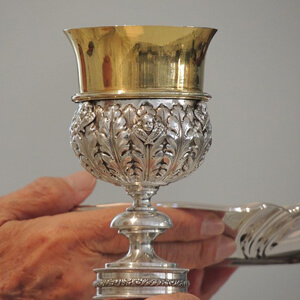
Officially, the Church’s latest guidelines allow for a two-fold approach: the general rule and room for local adaptation.
The general rule is from after the “Holy Holy” to the Great Amen, the congregation is to kneel. However, the local bishop may, in view of local tradition or pastoral concerns, modify it, with the stipulation that the congregation is to kneel from the epiclesis (when the celebrant invokes the Holy Spirit with his hands over the offering just before the consecration) to the Memorial Acclamation.
The guidelines also require local congregation to maintain unity in gestures. So any disparity of customs should be avoided through pastoral application of formation and exhortation, especially from the bishop and the pastors. So, if at a parish, some people are kneeling till the Great Amen and some are standing by the time of the Memorial Acclamation, it is the responsibility of the pastor to educate and encourage the people to adopt the same norm as laid down by the local bishop.
This is what we saw in many dioceses when the new English Roman Missal came out a few years ago, with bishops of different dioceses publishing norms to be taught at every parish. I knew, for example, it happened in Toronto, Ottawa, Hamilton, and London Ontario. So, for example, in Toronto and Hamilton, people kneel from after “Holy Holy” to the Great Amen, but in Ottawa, only from the epiclesis to the Memorial Acclamation.
So how do you know what to do if you are new to a city? Just observe and follow what everybody else does.
And what do you do if nobody kneels? Now, that would depend on the situation. Sometimes it could be because it is an outdoor Mass with no soft and safe surface to kneel on, then standing is fine. But if kneeling is possible and it would not create a disturbance, kneeling is preferred.
And what if a person is physically not able to kneel, for example, due to injury or age, then the general norm is to sit when others kneel. And don’t feel sorry about it.


